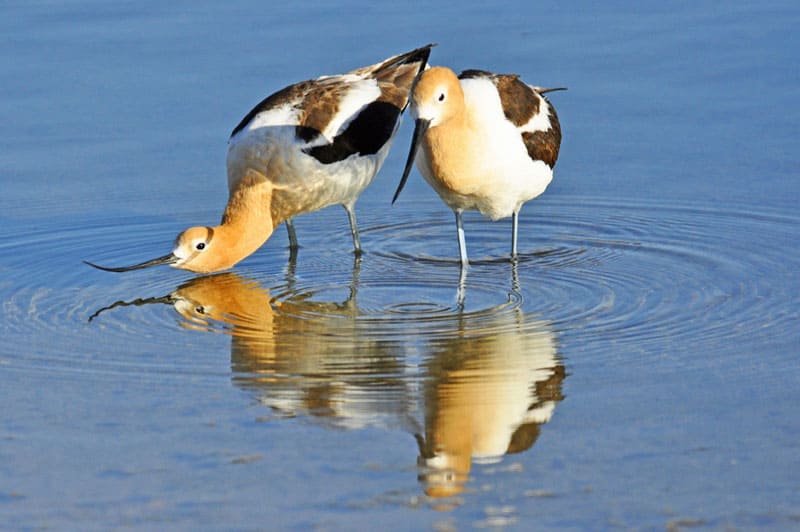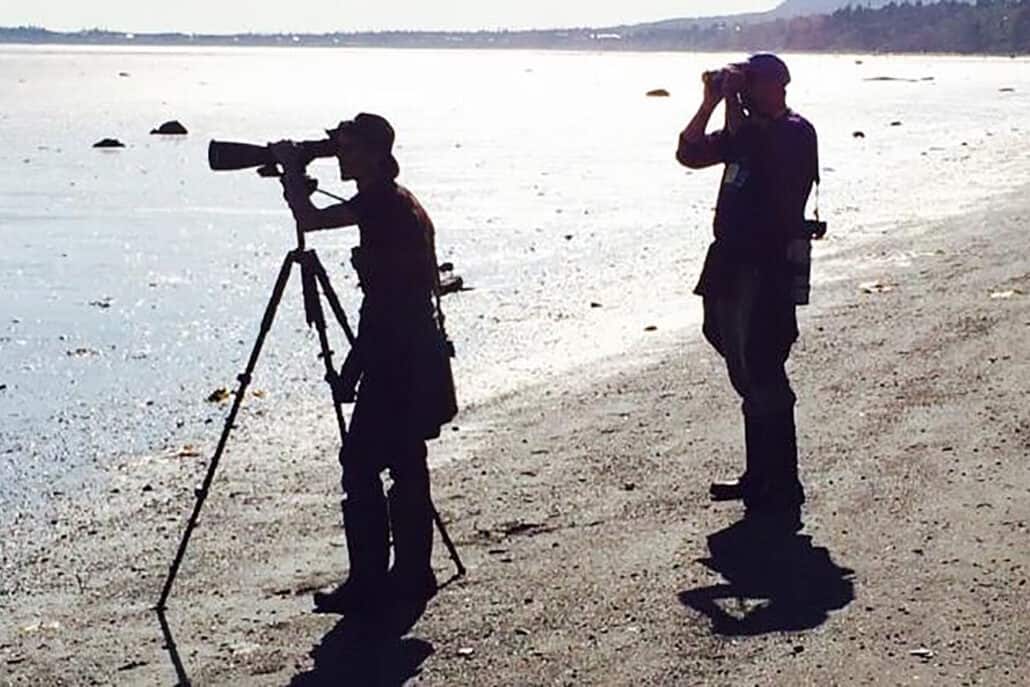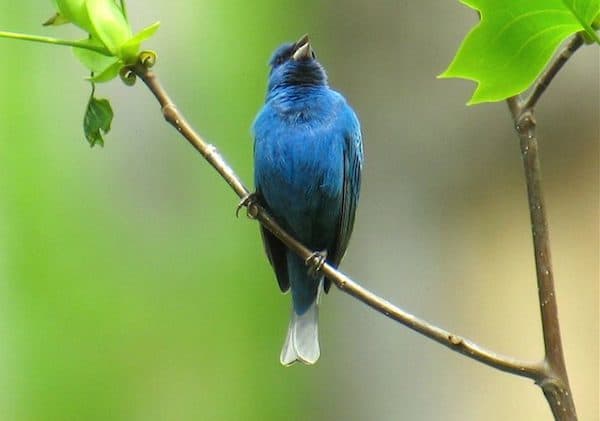Winter birds of Florida (December, January, February)
By early December most of the northern birds which will spend the winter in Florida have arrived at their destinations. Large flocks of waterfowl descend on a number of sites in the northern and central parts of the state. St. Marks NWR in the Panhandle and Merritt Island NWR near Titusville are among the best places to see them. The most numerous species include blue-winged and green-winged teal, northern pintail, American wigeon, northern shoveler, gadwall, hooded merganser, wood duck, ruddy duck, ring-necked duck, lesser scaup, and redhead.
Less common species and those that are encountered much more frequently in northern Florida and the Panhandle include common goldeneye, bufflehead, greater scaup, and canvasback. Red-breasted mergansers become fairly common all along Florida’s coasts but several other species of sea duck are usually only found in the Panhandle and along the Atlantic Coast. These include long-tailed duck, black, white-winged, and surf scoters. Small numbers of snow geese and the occasional Ross’s goose and brant are mainly found in the Panhandle.
Throughout winter loons and grebes are a common sight all around the coastline. By far the most frequently encountered species are common loons and horned grebes, with a few red-throated loons appearing mainly along the northern Atlantic Coast. Pied-billed grebes become abundant on most bodies of freshwater, even on small retention ponds. Although usually rather secretive, American bitterns can be found wherever there are extensive cattail beds or sawgrass marshes such as those in the Everglades.
In Florida, as in most states, winter is the best season to observe the greatest variety of birds coming to backyard feeders. The highest diversity of wintering land birds can be found in the northern part of the state. Mourning doves, northern cardinals, blue jays, red-bellied woodpeckers, red-winged blackbirds, and common grackles are common feeder birds throughout the state, but some species are found more in the northern and central parts of the state than in southern Florida. These include house finch, chipping sparrow, tufted titmouse, Carolina chickadee, white-throated sparrow, dark-eyed junco, American goldfinch, and pine siskin. In some areas painted and indigo buntings are regular visitors to feeders, and where they still occur, even Florida scrub-jays can be tempted by peanuts.
Large numbers of turkey vultures flock to towns and cities, swelling the resident breeding population. Soras and Virginia rails haunt the edges of marshes and ponds at dusk and massive flocks of American coot congregate at Merritt Island among other places. Hundreds of migrant sandhill cranes, arriving from their breeding grounds in the Canadian provinces, winter in the central part of the state. Florida’s beaches, marshes, and intertidal areas are thronged with no fewer than 27 shorebird species. Flocks of hundreds of elegant American avocets winter on the impoundments at Merritt Island and in just one or two other localities.
Although the laughing gull is the only species of gull to breed regularly in Florida, ring-billed, herring, and Bonaparte’s gulls are common winter visitors, and lesser black-backed gulls have increased greatly in recent years.
As far as passerines are concerned, the species that winter in Florida far outnumber those that breed here. Great flocks of yellow-rumped warblers, sometimes numbering hundreds of individuals, descend on the state and become an extremely common sight throughout oak woodlands and cypress swamps. Palm warblers can be almost as abundant in many areas, both the somberly attired western race which tends to winter along Florida’s coasts and the more brightly colored eastern race which is found more regularly in the interior of the state. With these flocks a few orange-crowned warblers can be found as well as an occasional blue-headed vireo and lots of blue-gray gnatcatchers and ruby-crowned kinglets.
In southern Florida and the Keys small numbers of other warblers spend the winter, and these include northern waterthrush, ovenbird, northern parula, and black-throated green warbler. Eastern phoebes become a familiar sight throughout much of the state and two western species, the scissor-tailed flycatcher and western kingbird, can be found in small mixed flocks on telephone wires mainly on the Keys and in southern Florida but also as far north as the Lake Apopka Restoration Area. An increasing tendency is for a few ash-throated and vermilion flycatchers to be found in the state every winter.
Several species of land birds are much more commonly found in northern Florida and the Panhandle in winter; these include hermit thrush, winter wren, brown creeper, golden-crowned kinglet, fox and white-throated sparrows, and dark-eyed junco. American robins and cedar waxwings can be found in varying numbers each year and they usually spread over the whole state. Both Nelson’s and saltmarsh sharp-tailed sparrows winter in Florida’s coastal saltmarshes with the former being found along both coasts and the latter being largely confined to the Atlantic seaboard.
Other landbird species that are found in Florida only in winter include yellow-bellied sapsucker and whip-poor-will, although the latter can be hard to find when it isn’t vocalizing. A few lesser nighthawks also overwinter, mainly in the Everglades.
For a few bird species, winter is the time when they nest and raise young. This applies particularly to bald eagles, which can often lay eggs as early as November, with great horned owls following closely behind them in January and February and then ospreys which nest in February.
Winter is still in full swing when the first returning “spring” migrants arrive from South America. The first purple martins, returning from a winter in Brazil, appear as early as the middle of January, and by the end of them month the first swallow-tailed kites begin to trickle in.





I live near Merritt Island Wildlife Refuge in Titusville, Florida and have ben seeing bald eagles a few times a week recently driving through town on US-! which follows the Indian River..
The birding festival is in January.